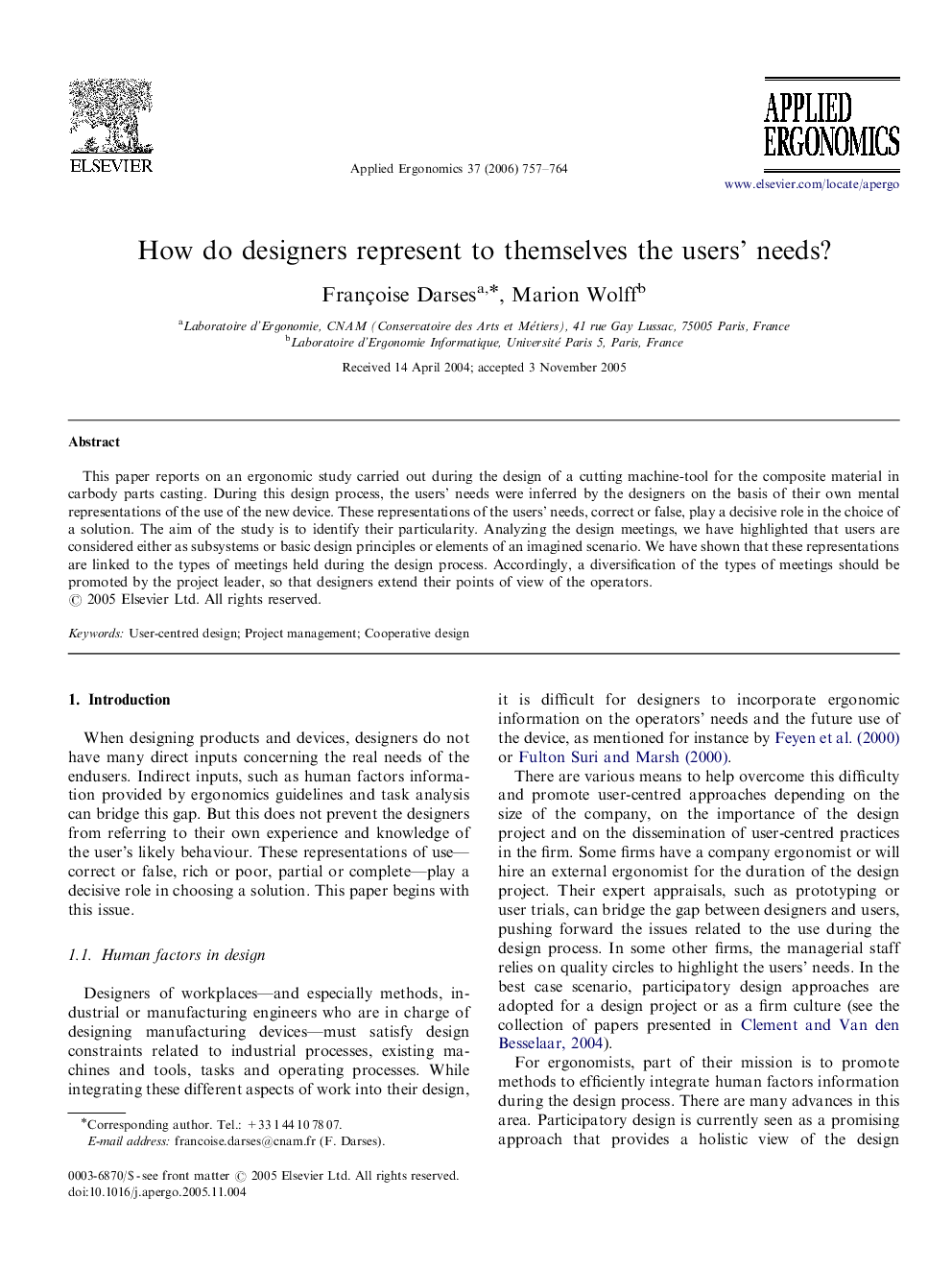| Article ID | Journal | Published Year | Pages | File Type |
|---|---|---|---|---|
| 550392 | Applied Ergonomics | 2006 | 8 Pages |
This paper reports on an ergonomic study carried out during the design of a cutting machine-tool for the composite material in carbody parts casting. During this design process, the users’ needs were inferred by the designers on the basis of their own mental representations of the use of the new device. These representations of the users’ needs, correct or false, play a decisive role in the choice of a solution. The aim of the study is to identify their particularity. Analyzing the design meetings, we have highlighted that users are considered either as subsystems or basic design principles or elements of an imagined scenario. We have shown that these representations are linked to the types of meetings held during the design process. Accordingly, a diversification of the types of meetings should be promoted by the project leader, so that designers extend their points of view of the operators.
